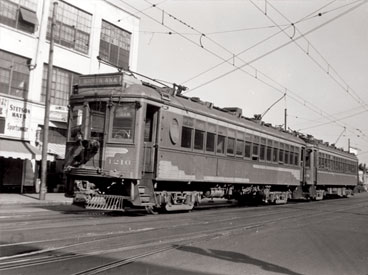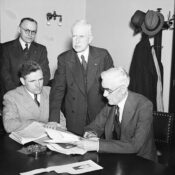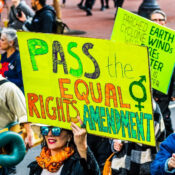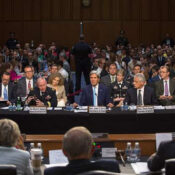The stage is set for a renaissance in public transportation, says former chairman of the House Transportation and Infrastructure Committee Jim Oberstar.
In the 20th century, the car was king. State and federal road building programs and cheap, abundant energy opened up vast expanses of our country for people to explore, and sprawling suburbs for them to populate. However, today’s realities of congested highways, climbing fuel prices, and concerns over carbon emissions are changing the way many Americans think about transportation. Just as the highways prompted us to think big, these new factors are now encouraging us to think small: shorter commute times, less energy consumption, reduced pollution, and more efficient ways to get where we want to go. [See also: “The Looming Crisis in Mass Transit” from our Jul/Aug 2012 issue.]
The stage is set for a renaissance in public transportation. Simply put, we need to move away from the automobile as our primary means of conveyance. Today’s commuters are looking for a safe, clean, efficient, economical, and practical alternative to driving to work. Already public transportation systems in major American cities are experiencing near record ridership counts, creating a need for expansion of capacity and upgrading of both infrastructure and rolling stock. But we need to increase the scope and options for public transportation. Here’s why:
• Every dollar taxpayers invest in public transportation generates about six dollars in economic returns. This investment can be a catalyst for building construction, population growth, increased property values, rehabilitation of industrial sites, commercial influx, job creation, and congestion reduction.
• Public transportation saves the equivalent of 4.2 billion gallons of gas annually—about 900,000 auto fill-ups a day, according to the American Public Transportation Association. If drivers shifted to public transit at the rate of 10 percent of their daily travel, the U.S. would reduce its dependence on oil imports by more than 40 percent.
• Public transportation systems cost less to build than highways. In an urban setting, a mile of freeway costs up to $50 million to build. The same mile of light rail can cost half as much and moves two to three times as many people.
So, why not just do it, to borrow the catch phrase of a famous sneaker company? Public transportation faces several obstacles to growth in this country. For example, federal highway funds are distributed to the states on an 80-20 basis—80 percent federal funds to 20 percent state funds. However, transit programs get federal funding for only 40 to 60 percent of the cost, depending on the project. That differential makes it very tempting for states to direct their resources to highways, where the federal share of the costs is much larger. And, when new rail projects run across state borders—and sometimes even county lines—the approval process can make funding well-nigh impossible.
Another obstacle is how deeply embedded car culture is in the United States. People made choices to move from the cities to the suburbs, from the efficiency of the public transportation system to the convenience of private, personalized transportation. Transit lost public support in many cities. For example, Los Angeles had one of the most extensive streetcar systems in the country, but the city chose to tear up the tracks and build freeways to accommodate the car. Across the country, public transportation came to be considered as a conveyance of the elderly, disabled, and poor. Federal funding for transit was looked upon as a social program rather than as a transportation program.
We have to move away from this post-World War II mindset, to transform our thinking, and link land use and development to transportation. Other countries already know the benefits of investment in public transportation. In Paris, increased transit has reduced automobile traffic by 25 percent, prompting the city to invest an additional $45 billion to expand its Metro system and remove even more cars from city streets.
As chairman of the House Committee on Transportation and Infrastructure, I proposed a transformational surface transportation program that would have invested $99.8 billion in public transportation over six years, and streamlined the approval process for transit projects. Unfortunately, the White House and Senate leadership did not think that the time was right to move such a comprehensive, and, yes, costly, transportation bill, and it stalled in the House. I believed then that such an investment was desperately needed. Today I believe it is needed even more.
Older transit systems in Boston, Chicago, New York, and other cities need rehabilitating. Most systems need expansion. It is up to the federal government, states, and local authorities to provide the dollars to upgrade these systems and reap the economic benefits they can provide.
Our nation has a rich history of visionary leaders with a strong commitment to public investment in transportation infrastructure. Will those who make decisions in Washington and the state capitals continue that tradition?
Only time will tell.
Jim Oberstar, D. Minnesota, served as a congressman for 36 years until 2011.
Become a Saturday Evening Post member and enjoy unlimited access. Subscribe now




Comments
Mr. Oberstar hit the proverbial nail on the head. The rate at which the U.S. is building (rebuilding) roads and buying cars is simply not sustainable. It is time for the U.S. to wake-up and see the reality of the world we live in today, and recognize alternate ways of thinking about public transportation.